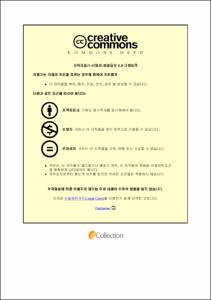A length-based model for Korean chub mackerel (Scomber japonicus) stock
- Abstract
- When data are not available on the ages of fish sampled by a fishery or survey, it is necessary to resort to a size-based model, especially when time series data about fish body sizes are provided. Assessment of Korean chub mackerel (Scomber japonicus) stock was one such case. Building upon Quinn’s size-based model (Quinn et al. 1998), I assessed Korean chub mackerel stock. The merits of Quinn’s size-based model lie in constructing an ‘imaginary’ age structure for a fish population, and using this to estimate the year and age population sizes of cohorts. The data used were yield and lengths of fish caught by a large purse seine fishery from 2000 - 2017, and catch-per-unit-effort from 1996 - 2017. I extended Quinn’s model in three ways. First, I modified the objective function, which was the residual sum of squares in Quinn’s model, into a negative log-likelihood function in which the distributions of the annual length data and yield data were assumed to follow a multinomial and a log-normal distributions, respectively. Then I applied a prior distribution for natural mortality as opposed to using a fixed value as in Quinn’s model. Finally, using AD model builder, I estimated both the point estimates of the parameters and the uncertainty in those estimates. Estimates of annual biomass (including recruits) ranged from 1.06 x 106 MT to 2.26 x 106 MT. Estimates of fishing mortality rates were in the range of 0.11 - 0.31 year -1, while an estimate of natural mortality was 0.11 year-1.
- Issued Date
- 2019
- Awarded Date
- 2019. 8
- Type
- Dissertation
- Publisher
- 부경대학교
- Alternative Author(s)
- Jinwoo Gim
- Affiliation
- 부경대학교 대학원
- Department
- 대학원 해양생물학과
- Advisor
- 현상윤
- Table Of Contents
- 1. Introduction 1
2. Materials and Methods 4
2.1. Data 4
2.2. Length-based model 5
2.3. Length-weight relationship 6
2.4. Objective functions 11
2.5. Estimation 17
3. Results 18
4. Discussion 34
4.1. Recruitment parameters 34
4.2. Maximum age 37
4.3. Growth 38
4.4. Sample size in LF 40
4.5. Length-weight data 42
4.6. Parameter estimation 43
5. Conclusions 44
Acknowledgments 45
References 46
Appendix 1. Detailed descriptions for the length-based model 50
Appendix 2. The notations used in the model 60
Appendix 3. ADMB code for the length-based model (Case I) 67
Appendix 4. ADMB code for the length-based model (Case II) 84
- Degree
- Master
- Files in This Item:
-
-
Download
 A length-based model for Korean chub mackerel (Scomber japonicus) stock.pdf
기타 데이터 / 1.09 MB / Adobe PDF
A length-based model for Korean chub mackerel (Scomber japonicus) stock.pdf
기타 데이터 / 1.09 MB / Adobe PDF
-
Items in Repository are protected by copyright, with all rights reserved, unless otherwise indicated.